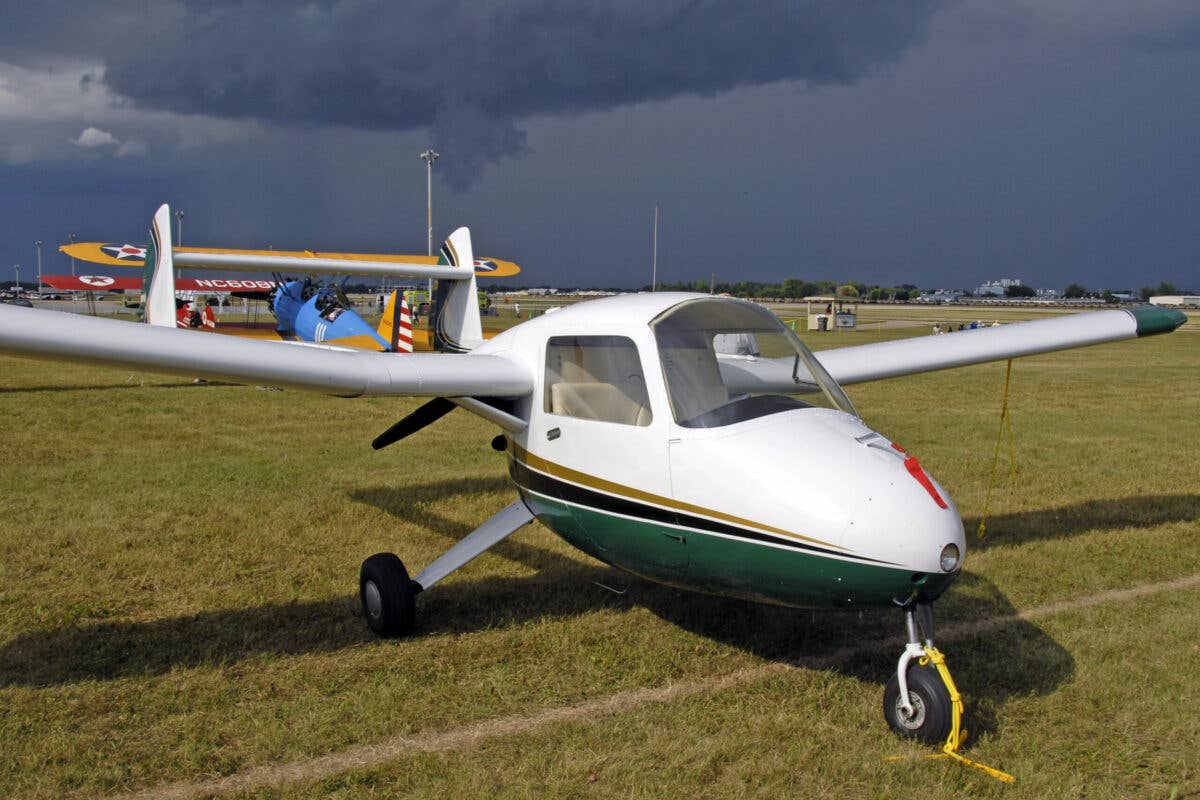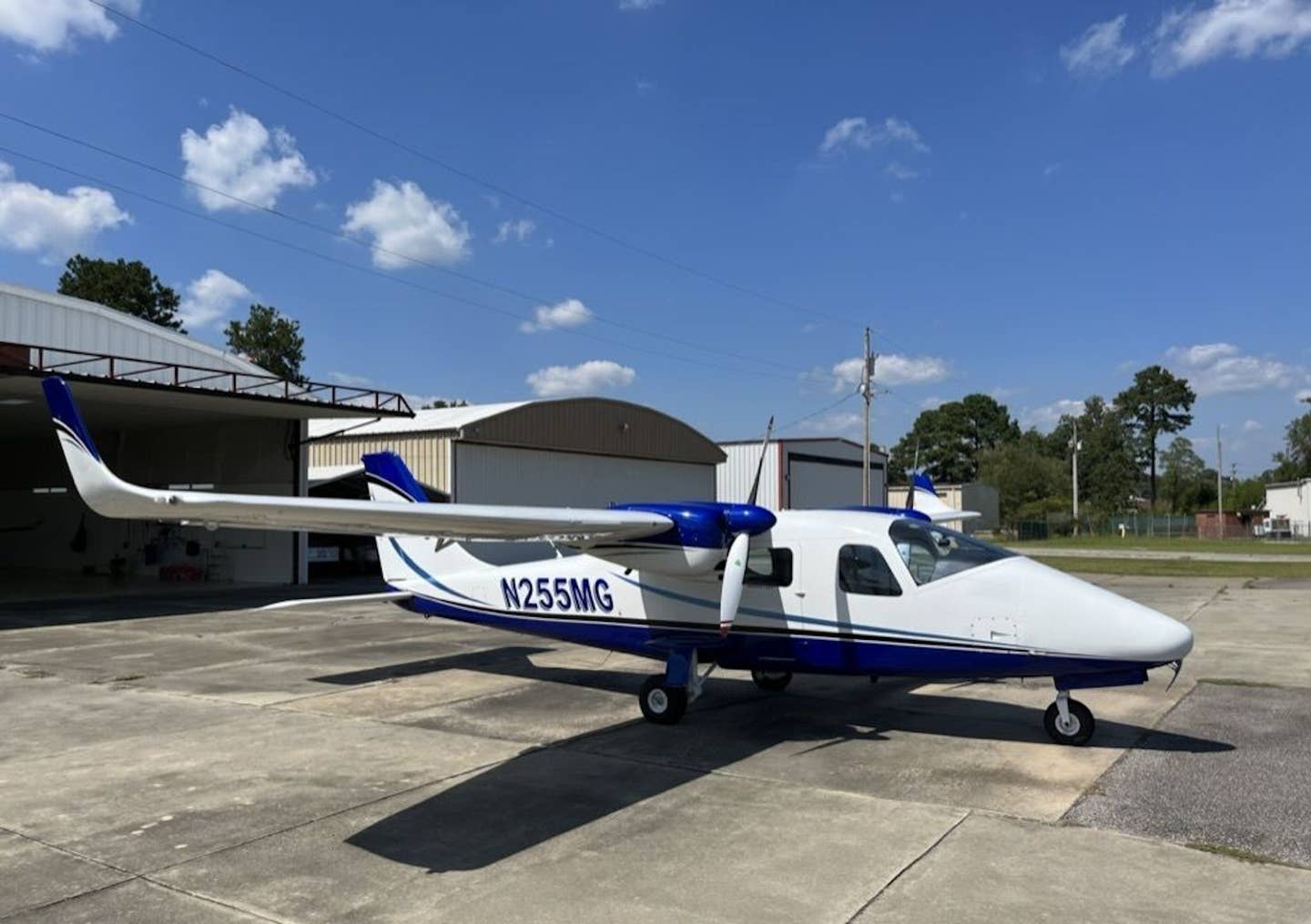Anderson Greenwood AG-14 a Rare Breed, Indeed
The Anderson Greenwood AG-14—of which only four remain registered—incorporated a decidedly unconventional layout that featured a single pusher engine and a twin-boom tail.

By positioning the passenger cabin well ahead of the wing, the AG-14 provides its occupants with nearly unrestricted visibility. [Photo: Jason McDowell]
Generally, the more unique and unconventional an aircraft’s design, the more extreme its strengths and weaknesses become. A canard configuration, a wing optimized for high lift, and an amphibious airframe each provide specialized capability, and each also introduces a corresponding penalty with regard to other factors. This give and take in aircraft design and engineering applies to all aircraft, from the largest transports to the smallest homebuilts.
Among the most interesting case studies are those that start with a common mission and reimagine the ordinary, eschewing the tried and true in favor of exploring new concepts. The Anderson Greenwood AG-14 is one such example. Aiming to gain a foothold in the personal aircraft market during the postwar years, it incorporated a decidedly unconventional layout that featured a single pusher engine and a twin-boom tail.
The fundamentals of the aircraft were common to existing types, however. Like many Cessna 140s, Luscombes, and Ercoupes, the AG-14 was equipped with a run-of-the-mill Continental C90 engine and a fixed-pitch propeller and weighed less than 1,000 pounds (empty) with a two-person capacity. This commonality of these foundational elements effectively isolated the pros and cons of the unique airframe layout, enabling an interesting side-by-side comparison with conventional types.
The most significant benefit of the unorthodox design was the completely unrestricted visibility from the cockpit. With no wing creating a blind spot either upward or downward, no engine cowling limiting forward visibility, and no propeller arc through which to look, the occupants’ field of vision is not unlike that of some helicopters. Indeed, had the design been given the opportunity to evolve, some panel reconfiguration could have enabled the introduction of a fully glazed forward cockpit like the Partenavia Observer. Such a modification might have appealed to the market as a low-cost helicopter alternative for duties such as pipeline inspection, law enforcement, and aerial survey missions.
A secondary benefit to the design is the configuration of the propeller and tail. Completely nested within the tail booms, the pusher propeller is shielded from wayward pedestrians who might carelessly wander around the airplane. Although the pilot cannot visually confirm the prop is indeed clear before engine start, the safety benefit of its position within the tail booms is legitimate.
Chief among the disadvantages of the AG-14’s layout is weight and balance. When it comes to aircraft design, it’s preferable to position the location with variable weight (such as fuel tanks and the passenger cabin) as close to the center of gravity (CG) as possible. This minimizes the effect varying weights will have on the CG, simplifying the concern of staying within that envelope.
By positioning the passenger cabin well forward of the wing (and CG), the AG-14’s design introduces some unique characteristics. With little effort, one person can lift the nose wheel up and tip the airplane back onto its tail. Pilots report that the nose wheel can be held off the ground indefinitely while taxiing, even at low speeds. While Anderson Greenwood sufficiently addressed any issues related to this aft CG to achieve type certification, it was undoubtedly a major concern during the design and certification phase. It’s possible the decision to limit pitch authority and make the airplane stall and spin resistant was a decision driven by the negative effects of a particularly aft CG in stalls and spins.
The additional structure and complexity of the twin-boom tail inevitably add additional weight compared to conventional tails. This naturally limits useful load, adds drag, and makes inspections and maintenance more complex. Nevertheless, Anderson Greenwood managed to achieve performance comparable to the Cessna 150, with a cruise speed of 110 mph and a climb rate of 630 feet per minute. One minor downside with which the Cessna doesn’t contend is related to the pusher configuration—positioned directly behind the nose wheel, the propeller is susceptible to damage and wear from foreign object debris.
The AG-14’s design was intriguing enough to inspire a derivation in the form of the Cessna XMC research aircraft. First flown in 1971, Cessna studied the nearly identical side and configuration in pursuit of noise reduction and improved visibility for personal flying and training purposes. Ultimately, only one example was built, and Cessna did not pursue the concept any further.
After being introduced in 1950, only five AG-14s were produced. Today, four remain on the U.S. registry, and at least one or two are maintained in flying condition. Occasionally, one of the owners attends fly-ins like EAA AirVenture in Oshkosh, Wisconsin, where one can see and admire the unique little airplane in person. While it is unlikely the design will reemerge in the form of a modernized version, advanced materials such as carbon fiber could enable further evolution of the concept.

Subscribe to Our Newsletter
Get the latest FLYING stories delivered directly to your inbox






